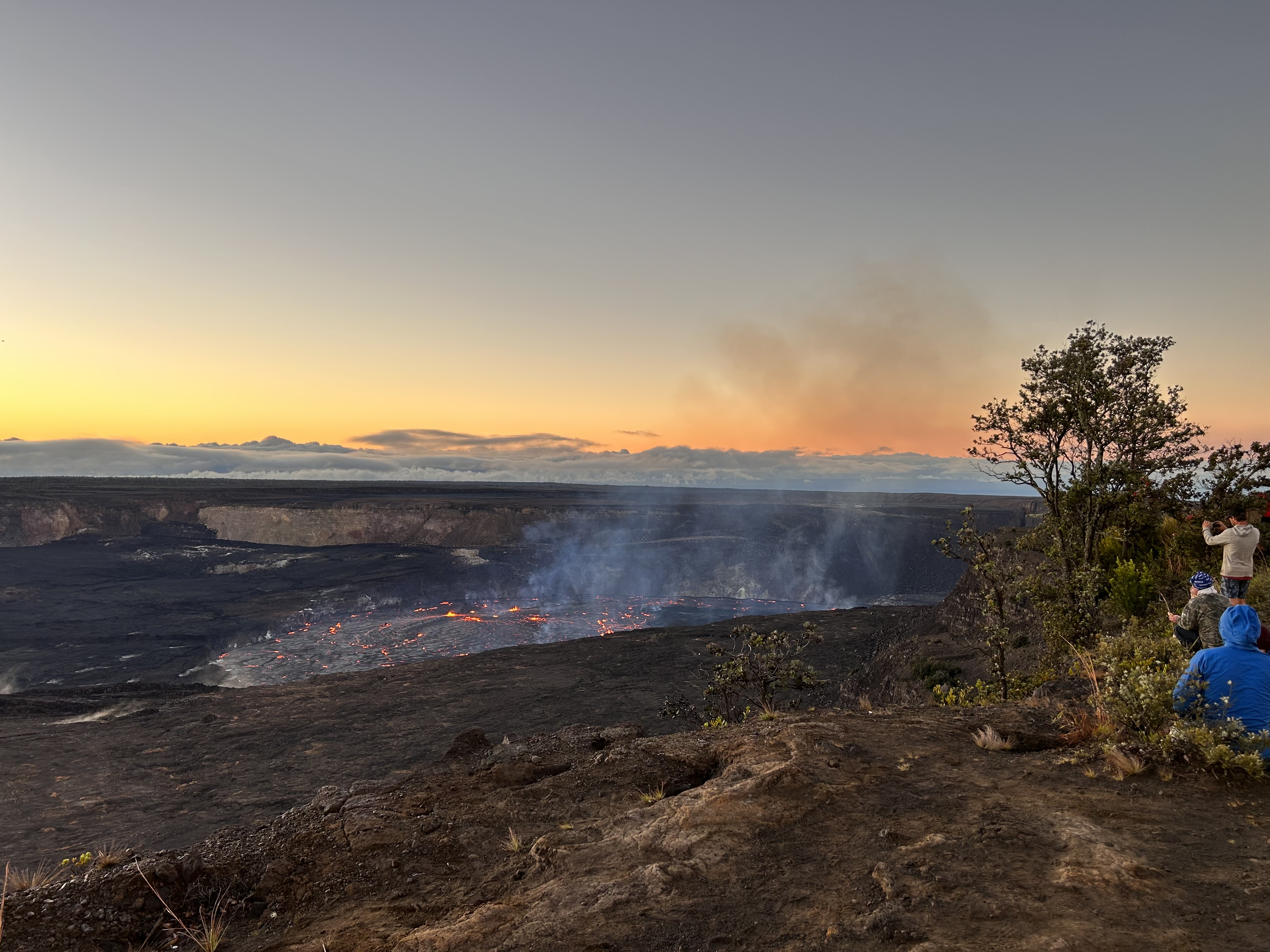January is officially Volcano Awareness Month in Hawaiʻi, an island state built completely of volcanoes old and new. Hot and fluid magma circulating in the planet’s mantle seeps up to and through the crust as a plume, and emerges on the seafloor in the middle of the Pacific Plate, where it methodically builds up a shield volcano. The plate is moving N/NW and subducting under Japan/Russia at a rate of about 5-10 centimeters a year. Like a great, slow, patient conveyor belt, the plate drifts over the “hot spot” of the mantle plume and volcanoes are built, one after the other.
Eventually the drift of the plate pulls the volcano off of the hot spot that formed it, and those eruptions gradually cease. At that point, erosion and settling pick up speed and, just as steadily and constantly, the volcano is worn down to sea level, and then under sea level, too. Formerly high-standing volcanoes that are now under the waves are called “seamounts”, and they stretch nearly to Japan on the northeast end of the Hawaiian chain. This line of young volcanoes and old seamounts is nearly 4,000 miles long, and at the S/SW end you find young Hawaiʻi Island, home to Kīlauea and Mauna Loa volcanoes. Jump just one island back to Maui, and there stands Haleakalā. These three volcanoes have been very active in the recent past and all three are within national park boundaries.
When the first people arrived to the present day Main Hawaiian Islands, those islands which are the youngest and tallest above the waves, they employed their immense powers of observation to note that the chain had an older/younger, smaller/larger flow to it. Stories rose from this understanding, powerful myths and legends about Pele, the volcano deity, who travelled the islets and islands from NE to SW, finally settling into the great caldera of Kīlauea. Kīlauea is the youngest of the currently active Hawaiian volcanoes that has built above sea level (the steadily growing Kamaʻehuakanaloa Seamount off of the SE coast still has a way to go before its summit emerges into the air). As of this writing, a Kīlauea summit eruption is ongoing, albeit in fits and starts. In 2018, an eruption along the volcano’s Lower East Rift Zone on the flank rearranged the topography of much of the Puna District and displaced about 2,000 residents. For a long stretch of human years, 1983 to 2018, it was possible, and common, to walk or hike out to the slow-moving lava flows sliding down to the sea from the Puʻu ʻOʻō vent on the volcano’s East Rift Zone flank. Volcanologists rate the threat potential from Kīlauea as “very high”.
The vast curve of enormous Mauna Loa dominates the views from East and South Hawaiʻi. It, alone, makes up over half of Hawaiʻi Island. When measured from the seafloor, Mauna Loa’s actual height is nearly 56,000ft. Eruptions of Mauna Loa, like the recent Summit and East Rift Zone eruption, are big events, effusing many times the volume of lava produced at Kīlauea, and at startling speeds. As Hawaiʻi Island has developed, many more residents are potentially impacted by the next eruption of Mauna Loa, so volcanologists are continuously monitoring it via sensors on the ground and satellite data.
USGS maintains an variety of webcams on Kīlauea: https://www.usgs.gov/volcanoes/kilauea/summit-webcams
Investigate every aspect of Kīlauea volcano from ancient lava tubes to recent lava flows: https://shop.hawaiipacificparks.org/products/explore-geology-of-kilauea
You can subscribe to a Mauna Loa notifications system here: https://www.usgs.gov/volcanoes/mauna-loa/volcano-updates
This map of Mauna Loa is fascinating: https://shop.hawaiipacificparks.org/products/map-mauna-loa
Haleakalā Volcano, the larger of the two volcanoes that make up the island of Maui, has had at least 10 eruptions in the past 1,000 years. Track the monthly updates of Haleakalā Volcano here: https://volcanoes.usgs.gov/volcanoes/haleakala/status.html
If you have been to the summit of Haleakalā, you might like this elevation benchmark zipper pull:
https://shop.hawaiipacificparks.org/collections/haleakala-national-park/products/zipper-hale-benchmark



